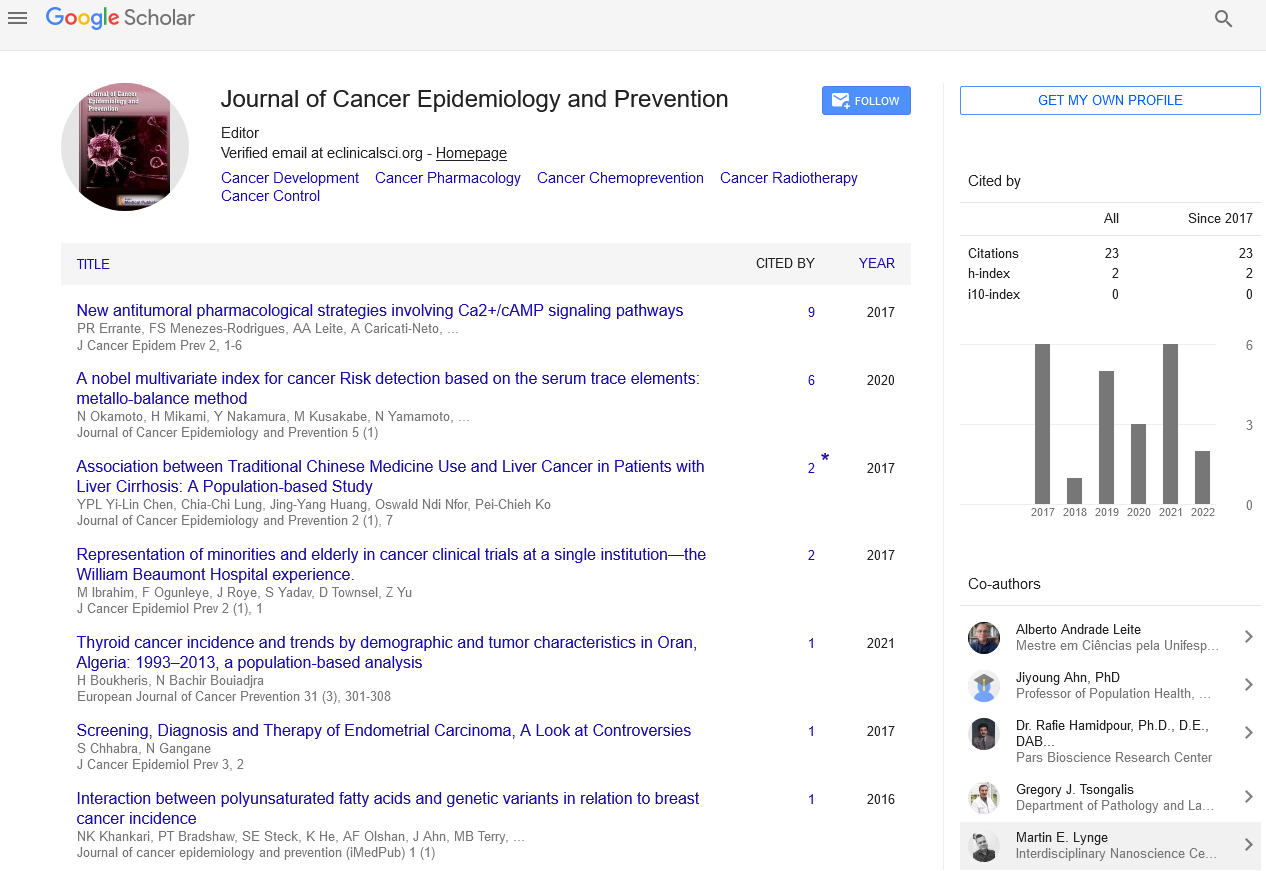Navid Ahmady Roozbahany*
Department of Otolaryngology, Shahid Beheshti University of Medical Sciences, Iran
- *Corresponding Author:
- Navid Ahmady Roozbahany
Department of Otolaryngology, Shahid Beheshti University of Medical Sciences, Iran.
Received date: June 26, 2020; Accepted date: July 08, 2020; Published date: July 15, 2020
Citation: Navid Ahmady Roozbahany (2021) Oral and oropharyngeal cancer. Cancer Epidemiology & Prevention Vol.6 No 3.2.
Copyright: © 2021 Navid Ahmady Roozbahany. This is an open-access article distributed under the terms of the Creative Commons Attribution License, which permits unrestricted use, distribution and reproduction in any medium, provided the original author and source are credited.
Oral and oropharyngeal cancer (opc) is a complex and often relentless malignancy prone to local invasion and dissemination. Despite advances in understanding of the disease and improved therapeutic interventions, it continues to be diagnosed at an advanced stage and the survival rate remains poor. The financial cost of treating opc may be the highest of all cancers in the United States and survivors often experience major detriments to quality of life. Major risk factors for opc are tobacco, alcohol, areca nut, and human papillomavirus infection. This article updates medical practitioners on the causes, presentation, diagnosis, and management of opc. Oropharyngeal cancer is cancer in the oropharynx, which is the middle part of your throat (pharynx). Symptoms include a sore throat that doesn’t go away; a lump in the throat, mouth or neck; coughing up blood; white patch in the mouth and other symptoms. Treatments may include surgery, radiation therapy, chemotherapy, targeted drug therapy and immunotherapy. Oral cancer is particularly dangerous because in its early stages it may not be noticed by the patient, as it can frequently prosper without producing pain or symptoms they might readily recognize, and because it has a high risk of producing second primary tumors. This means that patients who survive a first encounter with the disease, have up to 20 times higher risk of developing second cancer. This heightened risk factor can last for 5 to 10 years after the first occurrence. There are several types of oral cancers, but around 90% are squamous cell carcinomas. The other far less common oral cancers are ACC and MEC cancers which by comparison are relatively rare, but highly deadly as the depth of knowledge about them is far less than SCC. It is estimated that approximately $3.2 billion is spent in the United States each year on the treatment of head and neck cancers.
Symptoms and signs
Oral cavity (mouth) and oropharyngeal (throat) cancers might cause one or more of these signs or symptoms
• A sore on the lip or in the mouth that doesn't heal
• Pain in the mouth that doesn’t go away, a lump or thickening in the lips, mouth, or cheek, a white or red patch on the gums, tongue, tonsil, or lining of the mouth, a sore throat or a feeling that something is caught in your throat that doesn’t go away, trouble chewing or swallowing
• Trouble moving the jaw or tongue, numbness of the tongue, lip, or other area of the mouth, swelling or pain in the jaw, dentures that start to fit poorly or become uncomfortable
• Loosening of the teeth or pain around the teeth, voice changes
• A lump or mass in the neck or back of the throat, weight loss, pain in the ear.
Diagnosis of Oropharyngeal Cancer
Many oral cancers are found during routine dental exams. But because the disease doesn’t usually cause symptoms in its early stages, paying attention to changes in the oral cavity is critical, especially for people who regularly smoke tobacco and drink alcohol. Along with a clinical exam of the mouth, other tests or procedures designed for diagnosing oral cancer.

